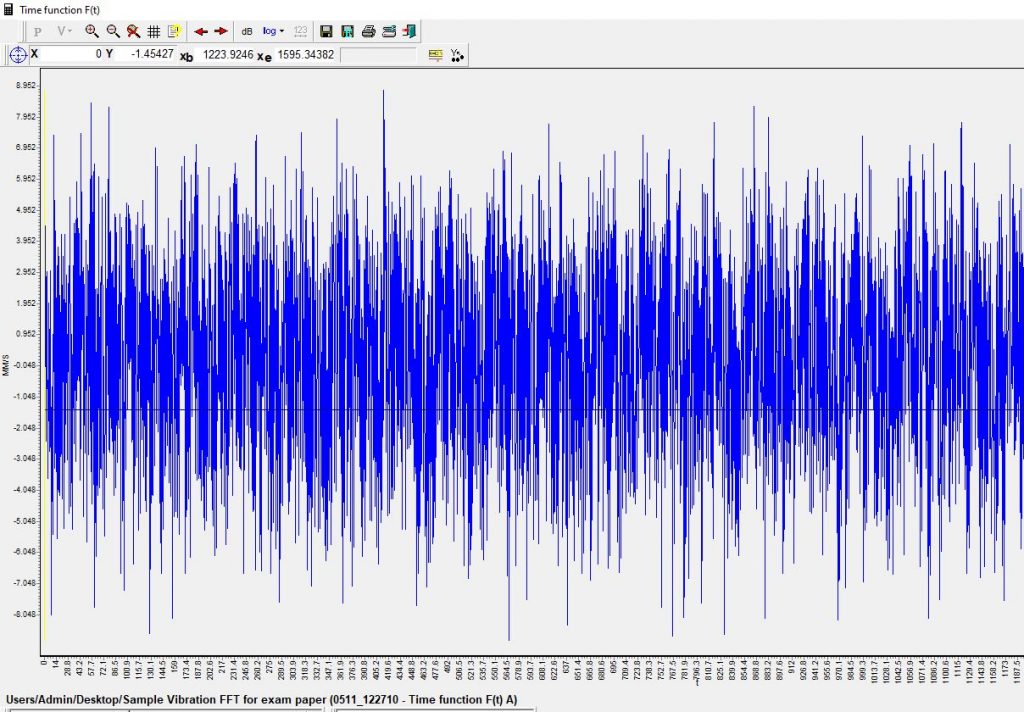Vibration Analysis Level I Course is intended for maintenance professionals who are exposed to Industrial Plant & Machineries, new to Vibration Monitoring & Analysis. The course focuses on single-channel data collection & analysis for the Predictive Maintenance (PdM) Program. A foundation is established for an in-depth understanding of accurate data collection, Spectrum Waveform Analysis. This course will help in gaining knowledge of the Vibration Time Waveform & Vibration Phase. This course will give clarity on maintenance fundamentals like CBM, CM, Condition Assessment, PdM, PM & will clear all misconceptions about Condition Monitoring.
Course Content
Maintenance Strategies
- Reactive Maintenance
- Preventive Maintenance
- Predictive Maintenance
- Prescriptive Maintenance
Condition Monitoring
- What is condition monitoring?
- Different techniques of CM
- Trend Analysis
- Maintaining records of readings
FMEA (Failure Mode Effect Analysis)
Principle of Vibration
- Introduction to Vibration Measurement
- What is Vibration
- What Causes Vibration
- Vibration & Machine Life
- When the condition of the Machine deteriorates
- Causes of Mechanical failure
- Introduction to Time Waveform
- What is Time Waveform?
- Effect of higher & lower Frequency
- RMS, Peak & Peak – Peak
- Multiple Frequencies in Time Waveform
- Frequency – Time Relationship
Vibration Analysis
- Need for Vibration Analysis
- Determining Machine History
- Determining Machine Details
- Probing study
- Defining importance of probing study
- Different probing Studies
- Piping Strain
- Soft Foot Condition
- Shaft bent Condition
- Obtaining Radial & Axial Spectrum
- Defining Spectral Parameters
- Identifying Problem Component based on FREQUENCY
- Identifying Problem Component based on AMPLITUDE
- Reducing the list of Possible problems based on Frequency
- Comparing Tri-axial Data
- Comparing Radial readings
- Comparing Radial readings with Axial readings
- FFT of Square Waveform
- FFT of Saw Tooth Waveform
- FFT of Spike Pulse
- Multiple Harmonic Vibration Frequencies
- Sideband Frequencies
- Introduction to FFT Spectrum
- What is a spectrum, how is it formed?
- What does FFT mean
- Vibration Frequencies
- Vibration Amplitude
- Vibration Displacement
- Vibration Velocity
- Vibration Acceleration
- Conversion of Measurement Parameters
- Spike Energy
- Complex Vibration

Vibration Analyzer & Signal processing
- Vibration Meters & Analyzer – A Brief Introduction
- Types of Vibration Analyzers
- Selection of Fmax for
- Rolling Element Bearings
- Sleeve Bearings
- Gear Boxes
- Selection of a number of Spectral Lines
- Spectral Averaging – Why it is important & how to set it
Data Acquisition
- Measurement of Vibration
- Mounting of Sensors on Machine
- What are routes & how to create them
- When to use Displacement Mode
- When to use Velocity Mode
- When to use Acceleration Mode
- Practical Measurement
- RMS Value
- Vibration Phase Measurement & Significance of Phase
- Phase Measurement Technique
- Vibration Transmitter- Accelerometer
- Types of Accelerometers
- Accelerometer Mountings
- Transducer Mount Usable Frequency Range
- Need to be consistent
- Determining Directional & Non- Directional Vibration
- Comparing Horizontal, Vertical & Axial Data
- Comparing Horizontal & Vertical Phase Readings
- Multiple Radial Amplitude Measurement
- Diagnosing Common Faults
- Unbalance
- Bent Shaft
- Kink or bent close to bearing
- Shaft Bow
- Misalignment
- Looseness
- Eccentricity
- Resonance
- Resonance Bump Test
- Defective Roller Element
- Vibration due to Aerodynamic Problems
- Vibration due to Hydraulic Problems
- Induction Motor Problems
- Gear Problems

